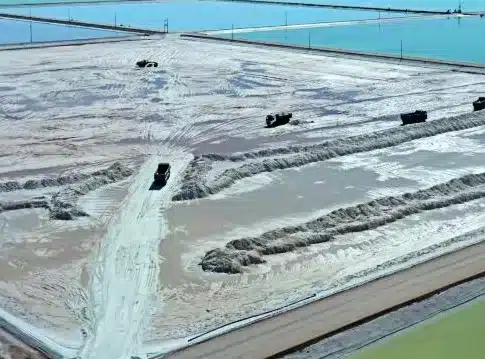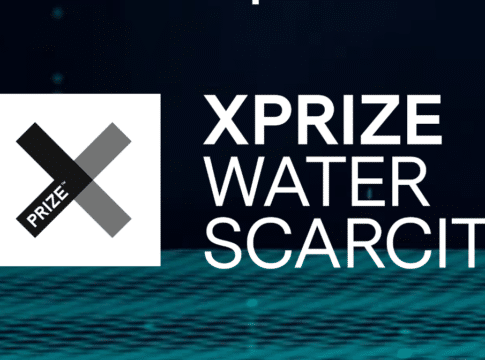Issues Facing US Lithium Projects and Battery Supply Chain Plans Amidst Price Decline
Financing for lithium projects in the United States is facing challenges due to sustained low lithium prices, posing a threat to the development pipeline and potentially hindering President Joe Biden’s ambition to bolster the domestic battery supply chain.
According to the S&P Global Market Intelligence report, there are about 100 lithium mine projects planned across the US. However, the allure of these projects is waning amidst a steep decline in lithium prices.
Navigating the Lithium Price Plunge
The sharp price decline has left many investors perplexed, particularly given the projected long-term demand for the mineral. Experts noted that it’s largely attributable to the slowdown in electric vehicle sales growth in China. This is also further compounded by the overall economic slowdown in the Chinese economy.
Market Intelligence data reveals an 81.7% drop in lithium prices from their 2022 peaks. This downturn made many projects less attractive to investors as the prolonged low prices persisted.
Existing US lithium producers, particularly those using brine extraction methods rather than hard rock resources, have managed to weather the price downturn to some extent.
Current producers have learned to adapt to the changing market conditions. Some employed cost-cutting measures, like what Albemarle did, while others are scaling back on their expansion plans.
READ MORE: Lithium Producers Adapt to Price Plummet, Cut Costs, and Delay Investments
However, the impact of the market downturn has been felt more keenly within the pipeline of future lithium output projects.
Additionally, junior companies seeking to develop lithium projects in the US and elsewhere have encountered difficulties securing funding amidst bearish market sentiment due to the price decline.
The financing hurdles confronting US lithium projects underscore the delicate balance between market dynamics and the imperative to strengthen domestic supply chains for critical battery materials.
Per Market Intelligence data, the price of lithium carbonate ex-works China battery stood at $14,750 per metric ton on March 6, down from its 2022 peak of $79,650/t on Nov. 30. Despite remaining 151.7% higher than the 2020 low of $5,850/t on July 31, current prices are not attractive for launching new projects.
Industry Insights and Uncertainties
The impact of low commodity prices on US lithium projects is significant in project development, particularly among smaller operators. These companies are finding it increasingly difficult to access funding due to concerns over returns.
Still, a junior Canadian lithium company, Li-FT Power (LIFT: LIFFF), remains committed to advancing the exploration and development of high-quality lithium assets in the country. It consolidates and advances hard rock lithium pegmatite projects in known lithium districts in Canada.
Keith Phillips, the CEO of Piedmont Lithium based in North Carolina, shared insights on lithium mining, describing it as a cyclical industry prone to fluctuations. In an interview, Phillips remarked on the significant downturn in lithium prices, saying:
“With lithium prices down by 90% from a peak 16 months ago, just about every new development project is slowing down, which will lead to another supply crunch.”
The uncertainty surrounding demand poses a significant challenge for the lithium industry. While increased demand for reliable lithium, spurred by the US Inflation Reduction Act, could provide some relief to the industry, there are concerns about the limited progress in the project development due to low prices.
This issue could potentially undermine the Biden administration’s objectives of reshoring critical supply chains. The IRA’s incentives should be able to adequately address this with proper incentives to promote domestic mining.
The Role of IRA and Investments
The law’s incentives have attracted massive investment into the US battery supply chain, which was largely underdeveloped before the bill’s passage. Electric vehicles (EVs) that meet specific requirements related to final assembly, critical mineral sourcing, and battery material processing may qualify for a $7,500 tax credit under the IRA.
The rule has led to a notable increase in investments in domestic critical mineral projects by both miners and automakers. For instance, Piedmont Lithium Inc., a US-based lithium producer, was motivated to establish a lithium processing plant in Tennessee. Moreover, its lithium project in North Carolina is also expected to start this year.
Ford Motor has planned to allocate $3.5 billion to construct a battery plant in Michigan, citing the IRA as a significant factor influencing this decision. Ford has also entered into supply agreements with several lithium companies in countries with free trade agreements with the US.
This strategic move enables the automaker to incorporate materials from these countries into its vehicle batteries while still qualifying for tax credits under the IRA. Similarly, Tesla Inc., the EV giant, has established supply agreements with multiple miners, including Piedmont and Albemarle.
Below is the investments to EV supply chain since the IRA has been enacted.
While there’s a strong demand for IRA-compliant material, the supply remains insufficient, according to Benchmark’s Williams. Albemarle CEO Kent Masters echoed this sentiment by expressing doubts about the effectiveness of the IRA in stimulating necessary investments.
Masters emphasized that the law has not yet succeeded in bridging the pricing gap between China and North America. It means that further measures may be necessary to incentivize investment in domestic lithium production.
READ MORE: Why Lithium Prices are Plunging and What to Expect
Challenges in the US lithium project pipeline amid price declines highlight the balance between market forces and policy incentives. Despite efforts like the Inflation Reduction Act, uncertainties linger. Addressing these challenges is vital for US competitiveness in the global energy transition.
The post Issues Facing US Lithium Projects and Battery Supply Chain Plans Amidst Price Decline appeared first on Carbon Credits.



